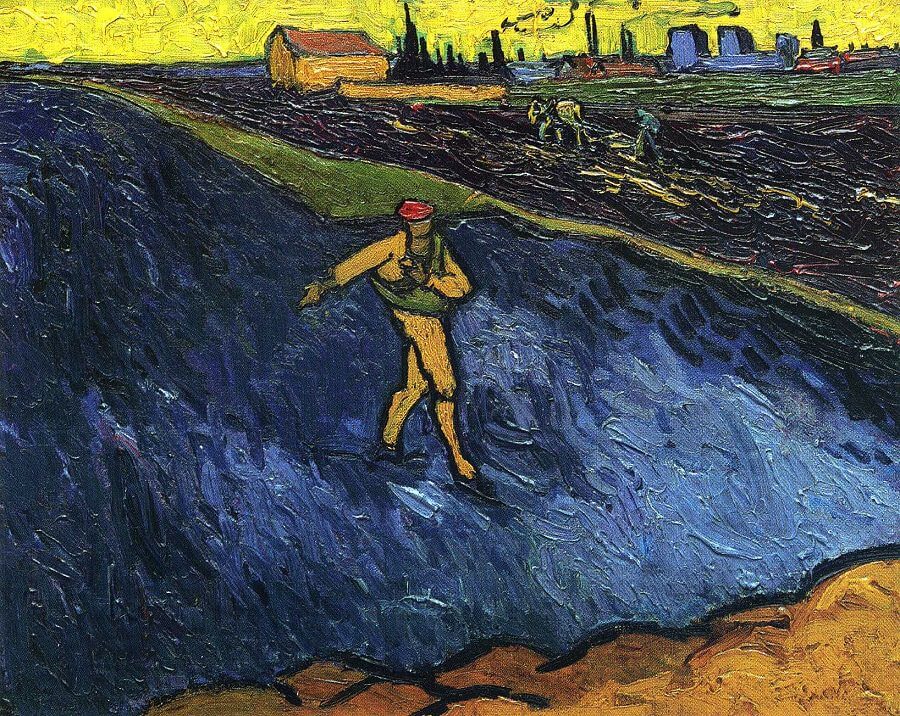The Sower, with the Outskirts of Arles in the Background, 1888 by Vincent van Gogh

During his time at Arles landscape motifs dominated his work, although towards the end of 1888 he also embarked on a large series of portraits. When depicting his landscape scenes there is often a hint of the town of Arles in the background, but the town is in general dwarfed by the surrounding scenery, Here again, the outskirts of Arles hover to the outside of the painting reduced to a puff of smoke and the odd geometric form of a building.
This work was done at a time when Van Gogh was experimenting with his painting technique, and was using large areas of flat colour delineated by heavy outlines. This technique was one that Bernard and Gauguin were also using, and that came to be known as Cloisonnism, It produced the effect of 'compartmentalized' colour in the manner of stained-glass window design where pattern and colour were carefully delineated. The composition has been reduced to its most simple forms to suggest the landscape across which the sower walks, and is drenched in areas of fierce, supernatural colour such as the mustard yellow sky.




















